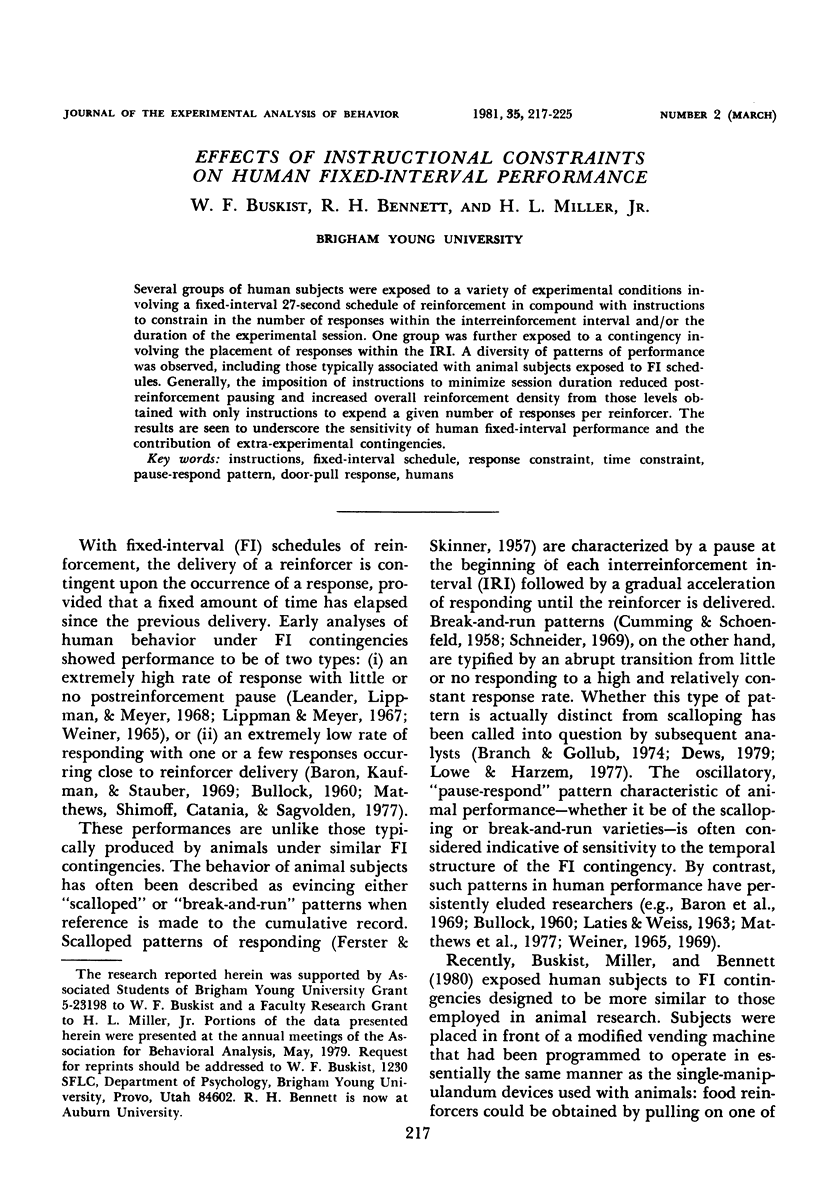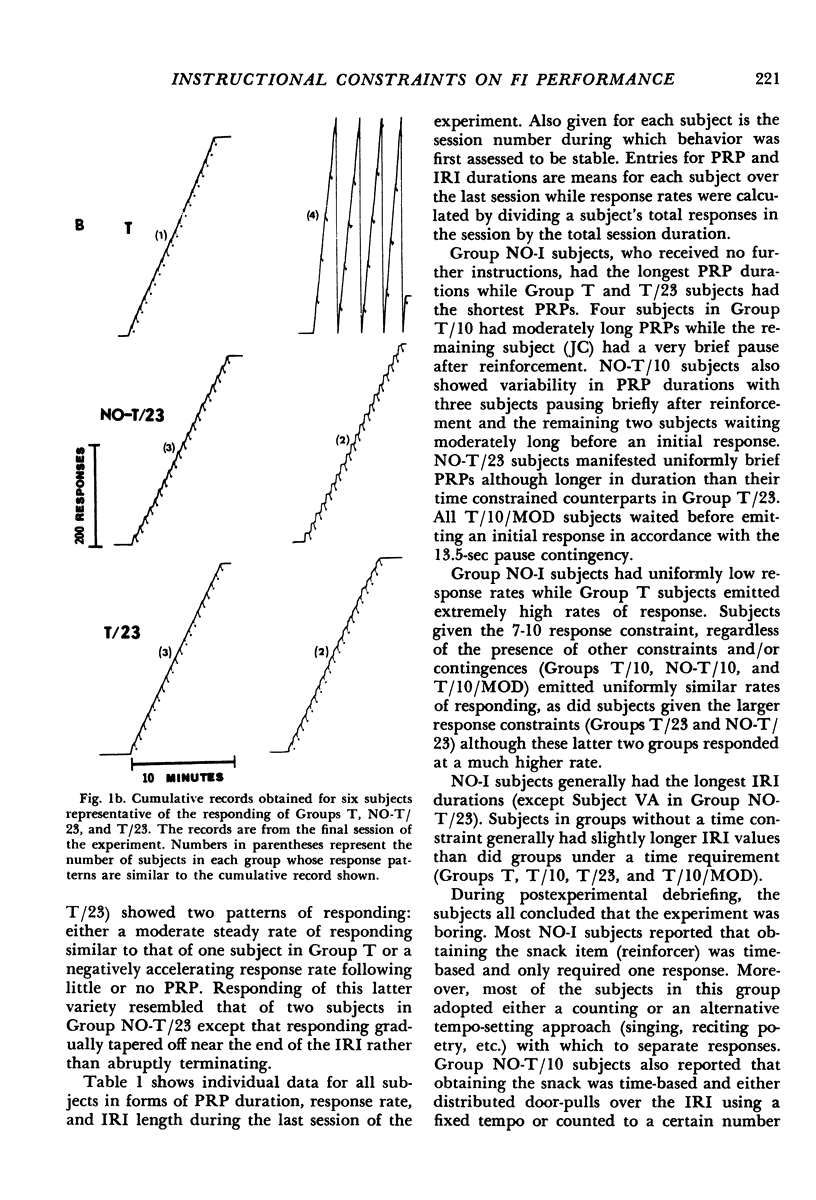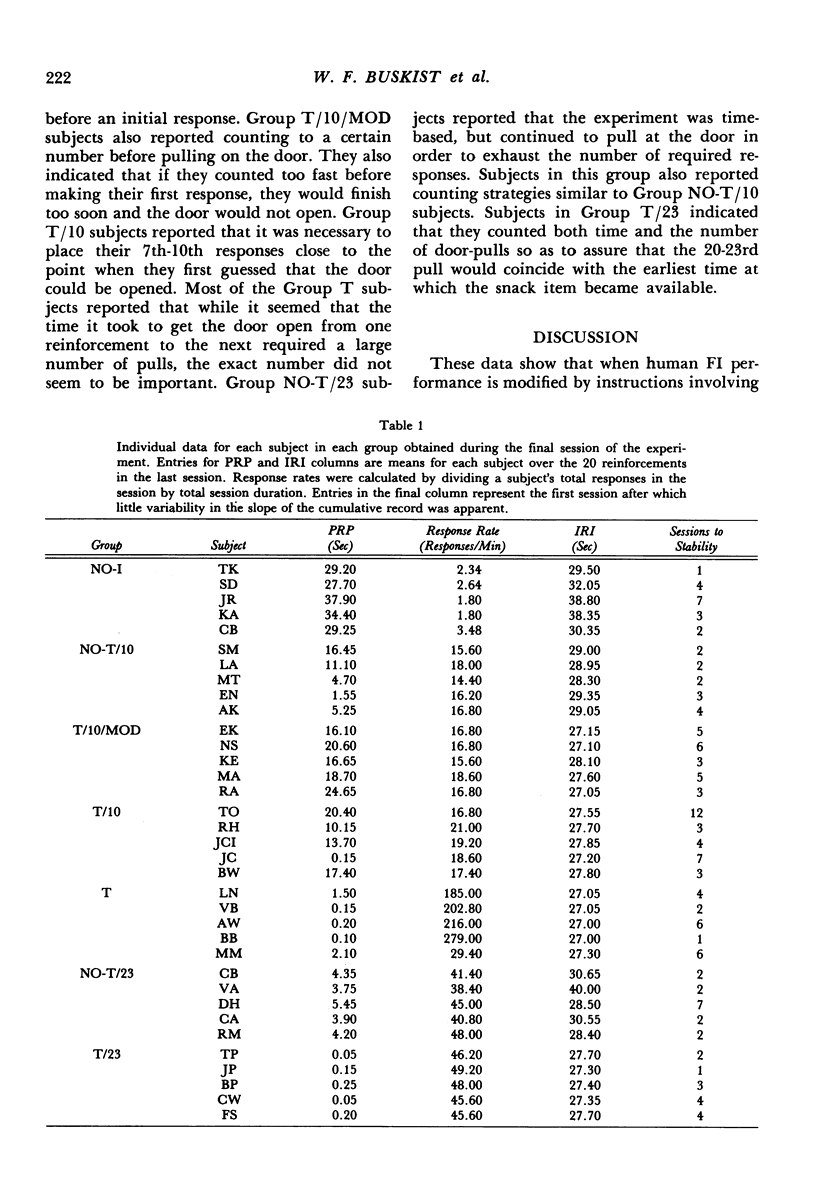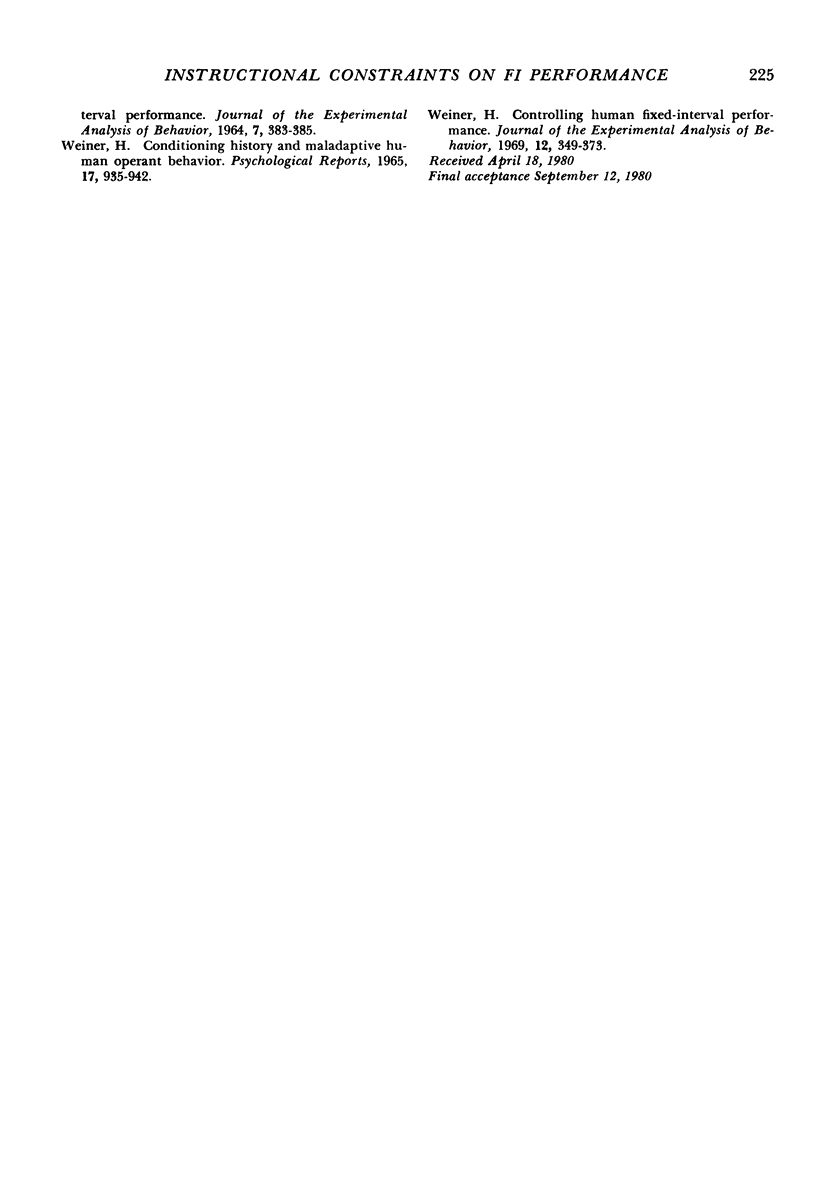Abstract
Several groups of human subjects were exposed to a variety of experimental conditions involving a fixed-interval 27-second schedule of reinforcement in compound with instructions to constrain in the number of responses within the interreinforcement interval and/or the duration of the experimental session. One group was further exposed to a contingency involving the placement of responses within the IRI. A diversity of patterns of performance was observed, including those typically associated with animal subjects exposed to FI schedules. Generally, the imposition of instructions to minimize session duration reduced post-reinforcement pausing and increased overall reinforcement density from those levels obtained with only instructions to expend a given number of responses per reinforcer. The results are seen to underscore the sensitivity of human fixed-interval performance and the contribution of extra-experimental contingencies.
Keywords: instructions, fixed-interval schedule, response constraint, time constraint, pause-respond pattern, door-pull response, humans
Full text
PDF








Selected References
These references are in PubMed. This may not be the complete list of references from this article.
- Baron A., Kaufman A., Stauber K. A. Effects of instructions and reinforcement-feedback on human operant behavior maintained by fixed-interval reinforcement. J Exp Anal Behav. 1969 Sep;12(5):701–712. doi: 10.1901/jeab.1969.12-701. [DOI] [PMC free article] [PubMed] [Google Scholar]
- Branch M. N., Gollub L. R. A detailed analysis of the effects of d-amphetamine on behavior under fixed-interval schedules. J Exp Anal Behav. 1974 May;21(3):519–539. doi: 10.1901/jeab.1974.21-519. [DOI] [PMC free article] [PubMed] [Google Scholar]
- Cumming W. W., Schoenfeld W. N. Behavior under extended exposure to a high-value fixed interval reinforcement schedule. J Exp Anal Behav. 1958 Aug;1(3):245–263. doi: 10.1901/jeab.1958.1-245. [DOI] [PMC free article] [PubMed] [Google Scholar]
- Dews P. B. Studies on responding under fixed-interval schedules of reinforcement: II. The scalloped pattern of the cumulative record. J Exp Anal Behav. 1978 Jan;29(1):67–75. doi: 10.1901/jeab.1978.29-67. [DOI] [PMC free article] [PubMed] [Google Scholar]
- Laties V. G., Weiss B. Effects of a concurrent task on fixed-interval responding in humans. J Exp Anal Behav. 1963 Jul;6(3):431–436. doi: 10.1901/jeab.1963.6-431. [DOI] [PMC free article] [PubMed] [Google Scholar]
- Lowe C. F., Harzem P., Bagshaw M. Species differences in temporal control of behavior II: human performance. J Exp Anal Behav. 1978 May;29(3):351–361. doi: 10.1901/jeab.1978.29-351. [DOI] [PMC free article] [PubMed] [Google Scholar]
- Lowe C. F., Harzem P. Species differences in temporal control of behavior. J Exp Anal Behav. 1977 Nov;28(3):189–201. doi: 10.1901/jeab.1977.28-189. [DOI] [PMC free article] [PubMed] [Google Scholar]
- Matthews B. A., Shimoff E., Catania A. C., Sagvolden T. Uninstructed human responding: sensitivity to ratio and interval contingencies. J Exp Anal Behav. 1977 May;27(3):453–467. doi: 10.1901/jeab.1977.27-453. [DOI] [PMC free article] [PubMed] [Google Scholar]
- Schneider B. A. A two-state analysis of fixed-interval responding in the pigeon. J Exp Anal Behav. 1969 Sep;12(5):677–687. doi: 10.1901/jeab.1969.12-677. [DOI] [PMC free article] [PubMed] [Google Scholar]
- WEINER H. CONDITIONING HISTORY AND HUMAN FIXED-INTERVAL PERFORMANCE. J Exp Anal Behav. 1964 Sep;7:383–385. doi: 10.1901/jeab.1964.7-383. [DOI] [PMC free article] [PubMed] [Google Scholar]
- Weiner H. Conditioning history and maladaptive human operant behavior. Psychol Rep. 1965 Dec;17(3):935–942. doi: 10.2466/pr0.1965.17.3.935. [DOI] [PubMed] [Google Scholar]
- Weiner H. Controlling human fixed-interval performance. J Exp Anal Behav. 1969 May;12(3):349–373. doi: 10.1901/jeab.1969.12-349. [DOI] [PMC free article] [PubMed] [Google Scholar]


